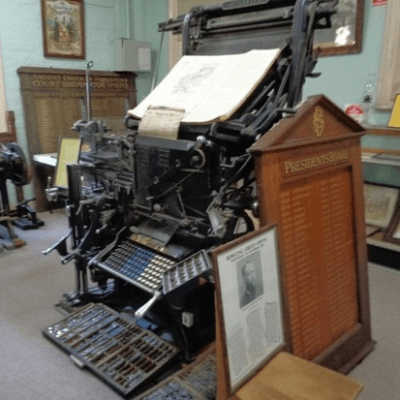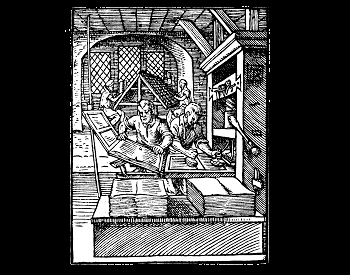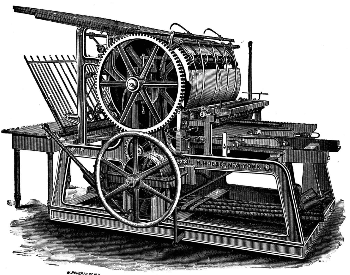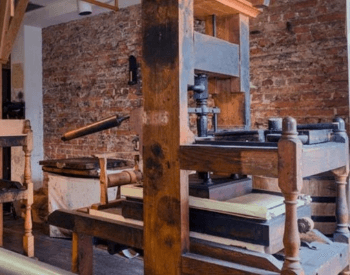
This web page contains printing press facts for kids and is an excellent resource for anyone of any age looking to learn about the printing press. Our goal is to provide you with accurate, up to date facts about the printing press. In addition to facts about printing presses, we provide additional resources to help you with your research on them.
The printing press facts below will help you learn about who invented the printing press, how the printing press changed the world, how fast the printing press was, and other printing press related facts. We hope these printing press facts are interesting and help you learn more about this world changing copying device.
If any of the below printing press facts are inaccurate, please contact us and let us know.
20 Printing Press Facts for Kids
- A printing press is a machine that uses pressure to create copies using ink.
- The printing press was invented by German inventor Johannes Gutenberg around 1439.
- Gutenberg’s invention had spread across Europe to at least 270 cities by the end of the 15th century.
- The invention of the printing press is considered one of the most important milestones of the 2nd millennium.
- The invention of the printing press started an event known as the printing revolution.
- The printing revolution was the rapid expansion of printing presses across Europe and the rest of the world.
- The printing revolution gave people the ability to rapidly circulate information and ideas.
- The invention of the printing press dramatically decreased the cost of reading materials and increased their accessibility to people.
- Estimates claim the printing press was able to create over 20 million copies between 1455 and 1500.
- Gutenberg style printing pressesd were able to output around 240 pages per hour.
- By the started of the industrial revolution the mechanics of the Gutenberg-style printing press were still the same.
- Two modifications to the printing press would radically change how printing presses worked and how fast they could output copies.
- The first important modification was the use of steam power instead of physical manpower.
- The second important modification was the use of a rotating cylinders instead of a flatbed.
- Between 1802 and 1818, German printer Friedrich Koenig was successful at implementing these two important modifications into a commercially viable printing press.
- The 1818 Koening printing press was able to copy 2,400 pages per hour, ten times more than the original Gutenberg printing press.
- The Times, a London newspaper publication bought the first viable models from Koenig and his partner German engineer Andreas Friedrich Bauer. These models were able to create over 1,100 copies per hour.
- In 1843, the invention of the steam-powered rotary printing press by American inventor Richard M. Hoe allowed millions of copies to be made in a day.
- Richard M. Hoe’s invention paved the way for the mass production of printed books, papers and other materials.
- The first book to be printed was the Gutenberg Bible in 1455.
Printing Press Pictures



Additional Resources with Printing Press Facts
- The Invention of the Printing Press – Learn about the invention of the printing press on the PS Print website.
- History of the Printing Press – Discover the history of the printing press on the History.com website.
- Printing Press – Britannica – Find more printing press facts on the Britannica website.
- Printing Press – Wikipedia – Read more about the printing press and its history on the Wikipedia website.
